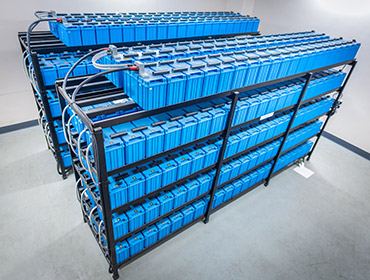In the final part of this series, we will continue to investigate some lesser-known but significant problems that can affect energy storage lead-acid batteries, and offer guidance on how to mitigate these issues.
7. Thermal Runaway
Thermal runaway is a dangerous condition in which the battery’s temperature increases uncontrollably during charging or discharging. As the battery heats up, its internal resistance decreases, leading to even higher currents and more heat. This vicious cycle can result in the battery overheating, causing damage or, in extreme cases, explosions or fires.
Solution:
Proper ventilation and temperature control are critical in preventing thermal runaway. Avoid placing the battery in high-temperature environments and ensure that the charging system has proper temperature regulation features. Additionally, regular monitoring of the battery’s temperature during operation can help detect early signs of thermal issues.
8. Battery Memory Effect
While more commonly associated with other types of batteries, such as nickel-cadmium (NiCd), lead-acid batteries can also suffer from a memory effect. This occurs when the battery is not fully discharged before recharging, leading to a loss in usable capacity over time.
Solution:
To prevent the memory effect, allow the battery to discharge to a lower state (without reaching a deeply discharged condition) before recharging. Regularly performing full discharge-recharge cycles helps maintain the battery’s full capacity.
9. Short Circuiting
Short circuiting occurs when the positive and negative terminals of the battery come into direct contact, either due to faulty wiring or accidental external contact with conductive materials. A short circuit can cause a rapid discharge, damaging the battery and creating a safety hazard.
Solution:
Ensure that the battery terminals are well-insulated, and keep the battery in a secure location where accidental short circuits are less likely to occur. Always check wiring and connections during installation or maintenance to prevent any potential short circuits.
Understanding and addressing common issues in energy storage lead-acid batteries can help extend their lifespan and improve overall performance. Proper maintenance, regular monitoring, and the use of advanced charging technologies are essential strategies for overcoming these challenges. By staying informed and proactive, you can ensure that your energy storage system operates safely and efficiently for years to come.


